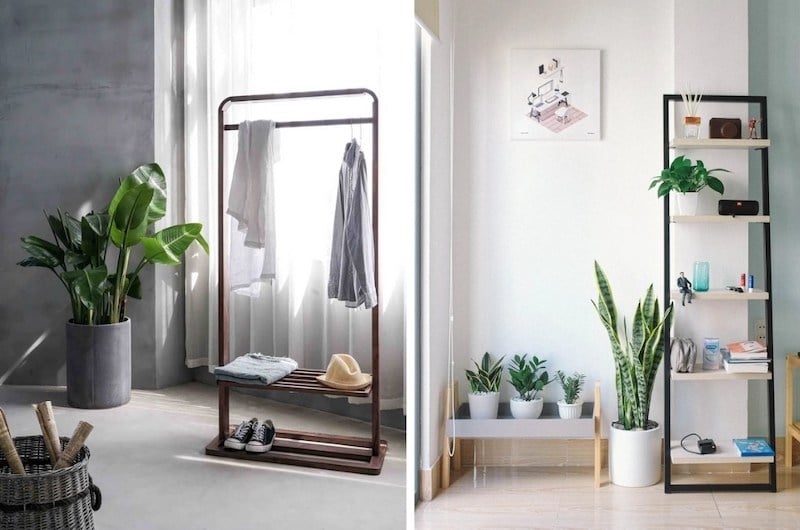If you’re all about sophisticated minimalism, then modern Japanese interior design is most likely up your alley. Characterised by natural materials, open spaces, and sleek neutral tones, it oozes a kind of tranquillity and effortless charm. You know, the kind that you’ll find in slice-of-life scenes from Studio Ghibli films and such.
Reminiscent of a slow-paced, well-balanced lifestyle, such interiors could certainly make your home feel more of the meditative space that it should be. After all, we could all use some more peace and harmony in our life — especially in these uncertain times. Beyond just the basic wall decor and cultural items, there are more ways to achieve the modern Japanese home aesthetic!
Read on to find out how you can zen up your living space…
Also read: A Look at Muji-Inspired Minimalist Homes in Southeast Asia
Main features of Japanese style houses that you can easily replicate
1. Lots of open space
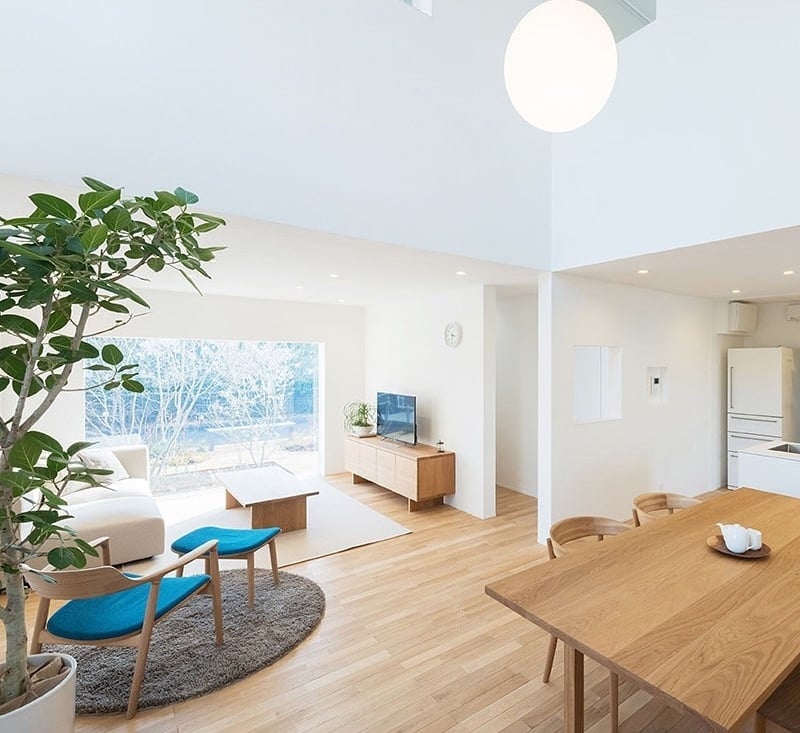
Image credit: Muji House Official Instagram Page
One of the key principles of Japanese interior design is having ample space, even when you only have a small home. In fact, many designers subscribe to the Japanese concept of Ma, which entails that one needs to shape their living space in a way that allows them to grow and progress.
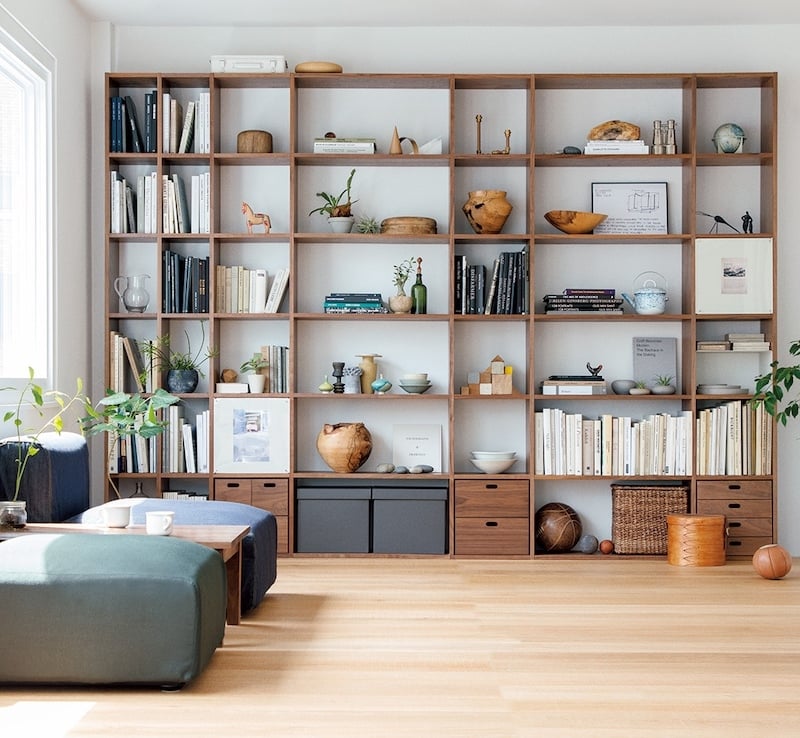
Image credit: Muji Hong Kong Official Website
To achieve this, most interior designers in Japan arrange a room’s items and furniture such that they follow a natural flow. Meaning, all these things have a perfect placement and purpose. The furniture must line only one or two walls, while the rest should be open and clutter-free! Best to have large cabinets, drawers, or tables with cubby holes to save space.
2. Indoor plants
Are you one of those people who have been collecting a lot of indoor plants, especially at the start of lockdown? Well, you’re in luck because this is what many Japanese style houses are all about! We recommend the likes of bonsai trees, ferns, or even ikebana-style flower arrangements. Just make sure that all that greenery doesn’t compromise your open space plan!
These natural elements would certainly bring zen into your space. After all, Japanese culture is all about loving and respecting nature. And what better way to stay connected to the great outdoors than by bringing it indoors?
Also read: Thinking of Taking up Gardening? Let These 20-Somethings Show You How!
3. Wood and straw accents
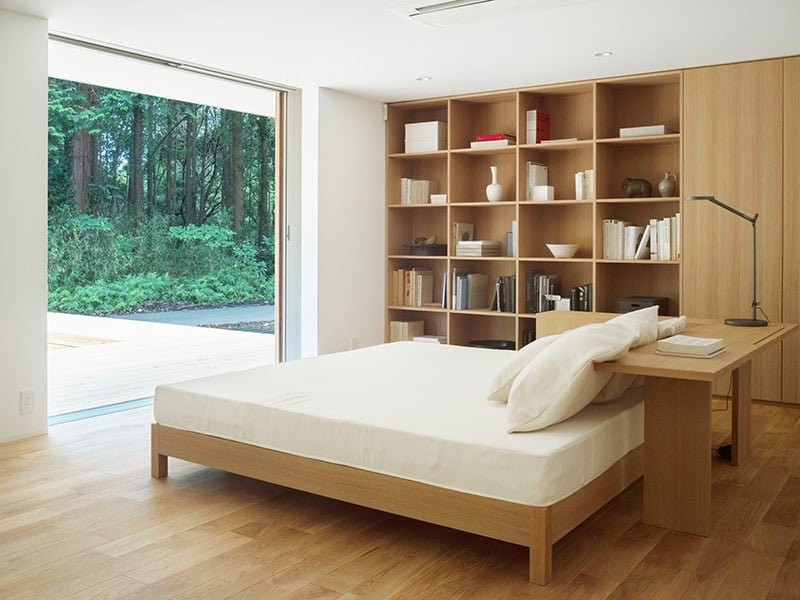
Image credit: Muji House Official Website
Another way to incorporate natural elements is through furniture and furnishings made from natural wood. These can range from tables, shelves, and lamps, to floors and platforms. Just make sure to keep it sleek and minimalist; focus more on the quality rather than an elaborate design.
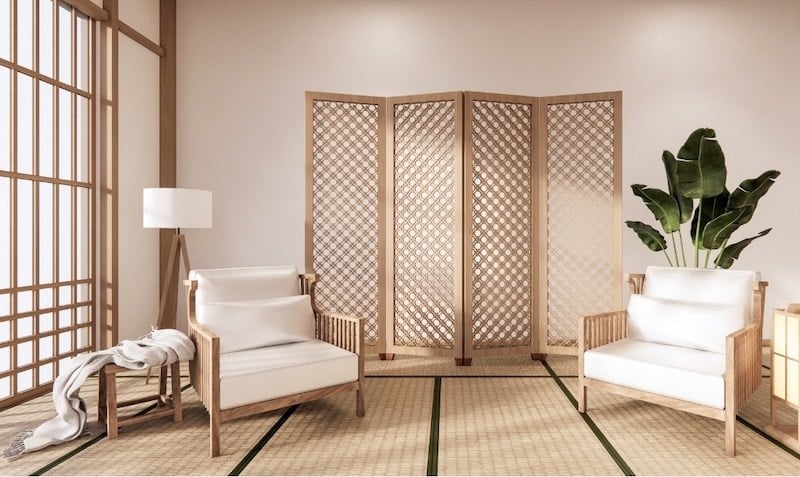
Image credit: Navamin Studio via Canva Pro
Most traditional Japanese houses also have straw accents — the most prominent being tatami, or woven mats made from rice straw. (Bonus points if you make it a point to never wear outside shoes inside to keep the floors clean!) You can also opt for woven chairs, although these shouldn’t look too tropical, so as to not interfere with the overall Japanese interiors.
Also read: 7 Minimalist Work Desks That Will Spruce Up Your Home Office
4. A dominantly white palette
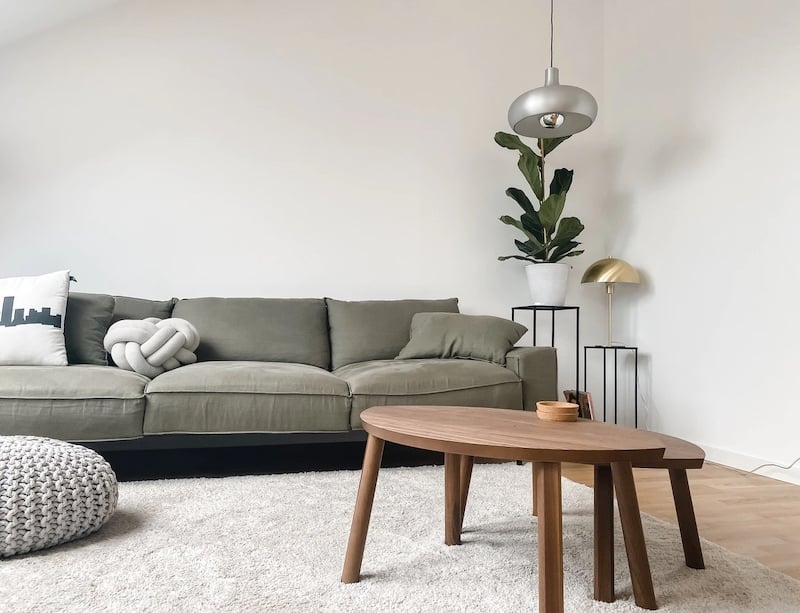
Image credit: Katja Bayer
There’s nothing like shades of white to bring total serenity and calmness to your home. Feel free to add a dose of neutral hues here and there, too! If you love bright colours, make sure to keep these at a bare minimum.
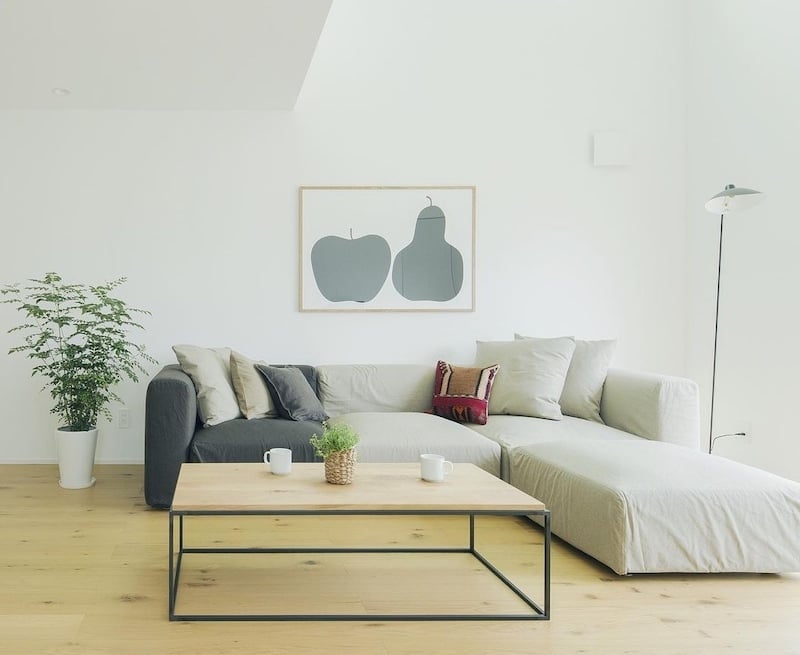
Image credit: Muji House Official Instagram Page
Not only does white give the illusion of a larger space, but it also follows the minimalist aesthetic of Japanese interior design. The easiest way to go about this is with white walls, but if that’s not an option, you can go for simple homeware and appliances in shades of white! Oh, and did we mention that white also helps reflect the natural light?
5. Blinds, screens, and dividers
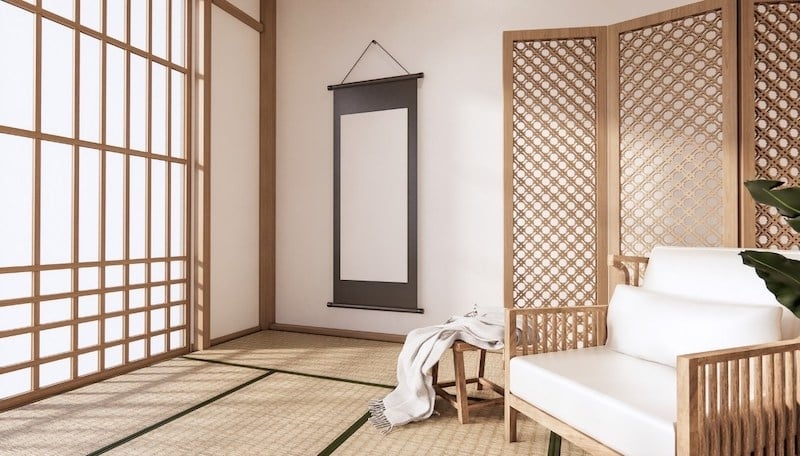
Image credit: Navamin Studio via Canva Pro
Speaking of natural light, heavy draperies are a big no-no when it comes to Japanese interior design! Instead, opt for blinds (preferably wooden ones in light shades) that don’t block the sunlight and views outside.
Many traditional Japanese houses have room dividers; usually bamboo screens and shoji (a sliding panel made of translucent paper and wood frame). You can easily find these screens and dividers at stores like Muji, some of which come in Japanese-inspired patterns! Or better yet, opt for the collapsible type, so you can easily set it aside when you don’t need it.
Also read: 27 Best Things to Buy at Muji Stores in Asia
6. Low-height furniture
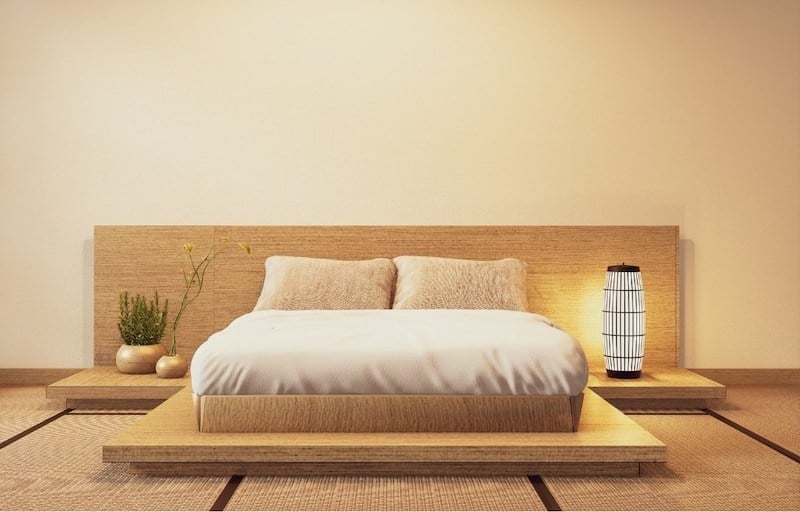
Image credit: Navamin Studio via Canva Pro
Another key feature in Japanese style houses is furniture that’s close to the floor. After all, in Japanese culture, it’s customary to sit on cushions or tatami mats to maintain proper posture. You can easily cop the aesthetic with low-lying bed frames, coffee tables, and even sofas. Don’t forget to keep ’em sleek and fuss-free, too!
7. Overall simplicity and structure

Image credit: yarkmebaanwoii Official Facebook page
Perhaps the most important rule of Japanese interiors is to keep it to the bare essentials. At the end of the day, this basic tip should help keep your space from feeling cramped or messy. And if we were to abide by the art of wabi-sabi — it doesn’t have to be perfect, but everything should have a place and function.
If you need more tips on how to declutter, might we suggest watching a Marie Kondo show or two?
Other things you can incorporate for a modern Japanese home
Because if you’re going for a Japanese interior design, then might as well go all-out. (At least, if your budget and actual space would allow it.)
8. Sliding doors
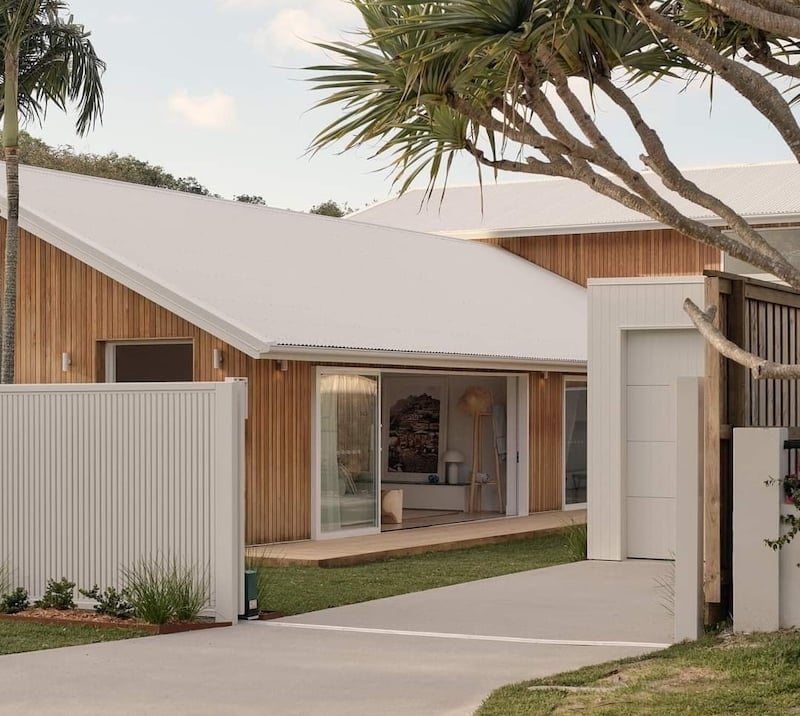
Image credit: yarkmebaanwoii Official Facebook page
Traditional Japanese houses use shoji-panelled sliding doors. Unlike other door types, these don’t get in the way of nearby furniture — therefore saving lots of space. These also allow for better air circulation when opened. However, most modern Japanese homes have switched to glass sliding doors for a more up-to-date look!
9. Large windows and skylights
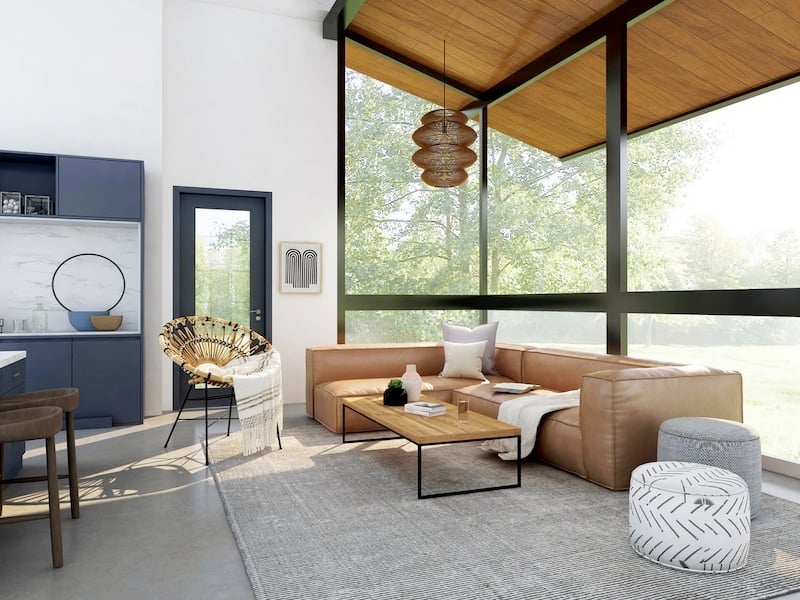
Image credit: Collov Home Design
These are other glass fixtures that work well with Japanese interiors. Bonus points for the fact that such expansive windows and ceilings also let in more natural light, as well as calming views to keep you company.
10. Large soaking tubs
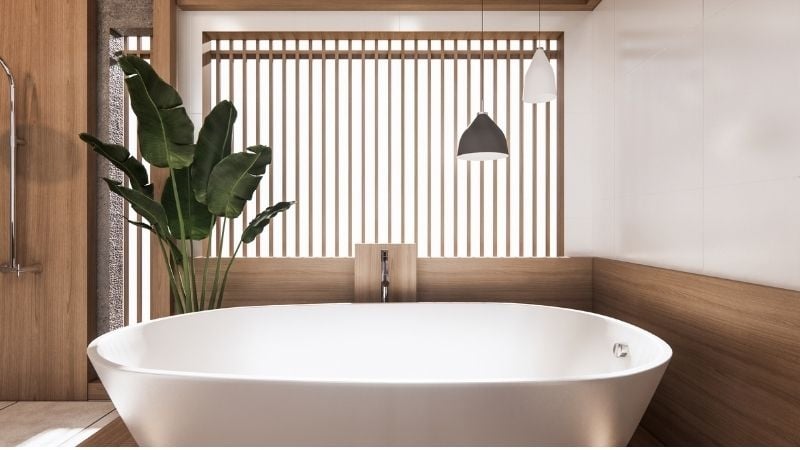
Image credit: Navamin Studio via Canva Pro
A staple in most traditional Japanese houses, the ofuro (a small yet deep wooden tub) is something you might wanna consider. Similar to indoor plants, these could also work wonders for your mental health! Who doesn’t love a warm soak with the sound of bubbling water to rejuvenate the senses?
Not exactly into wood accents for your bathroom? Fortunately, there are contemporary ofuro designs that come in marble and ceramics! And if your bathroom isn’t large enough to fit such a tub, then opt for a smaller tub with a little more depth.
Also read: 8 Online Furniture Stores in Singapore That Provide Home Delivery
Doesn’t this make you miss travelling to Japan? Because it certainly does for us.
Oh, and if you need more ideas on how to spruce up your space — perhaps this quiz would help!
Featured image credit: Muji House | Official Website
Facebook image credit (L-R): Spacejoy | Unsplash; Muji House | Official Website
